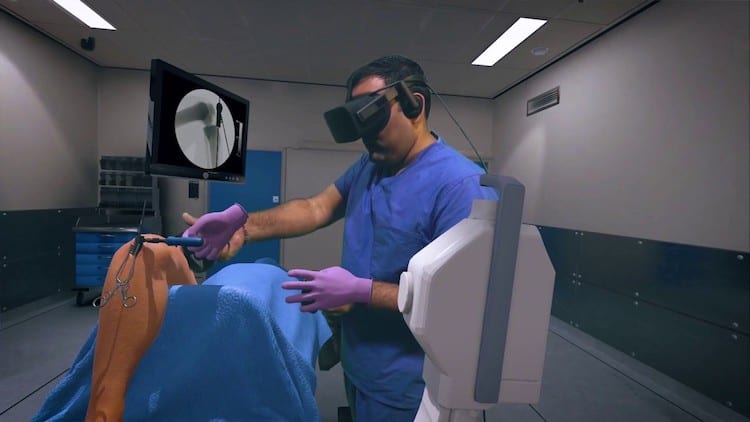
Last month, we shared insights on how Virtual Reality (VR) can aid phobia treatment in the healthcare industry. In this post, we will take a look at another use case in VR and the focus would be on medical training in the 21st century.
With the advent of new technologies in health care, patients now expect surgical procedures to be done using the most advanced methods, preferably by a fully qualified surgeon.
On the other hand, healthcare and surgical education also needs to adopt some of these advances in technology for experts and trainees alike. One of those technologies is Virtual reality. VR is one of those technologies that can be widely used in surgical practice, to shape and train future surgeons.
Various surgical situations can be simulated using VR, to allow the students and professional surgeons to deal with it as in real life. The use of VR allows them to get feedback and debriefs that allows them to learn from their mistakes, if any. The beauty of VR systems is that the faculty members are not required to be present, making access to required knowledge more flexible and broad-based.
Practically, VR has been used to help medical professionals visualize the interior of the human body, thus unveiling otherwise inaccessible areas. For example, the dissection of cadavers, which was a norm for every new medical student, has given way to the study of human anatomy via VR.
In recent times, surgical trainees have been suffering from reduced training hours with less exposure to surgical procedures. Virtual reality technologies can bridge this gap, making training easier and more accessible.
Advanced technology has clearly made it possible to recreate any part of the body in great detail to extreme reality. For instance, real-life surgical procedures can first be filmed from multiple angles with stunning quality and then combined with models of the body site being operated on, to allow the student to ‘operate’ in VR.
Here at eHealth4everyone, our virtual reality applications in healthcare have many compelling use cases, ranging from serving as a training tool for providers to being used directly on patients to improve health outcomes. You can contact us to plan your VR healthcare strategy.
References
1. Harries RL, Williams AP, Ferguson HJM, et al. The future of surgical training in the context of the ‘Shape of Training’review: consensus recommendations by the Association of Surgeons in Training. Elsevier, 2016.Google Scholar
2. MacFie J. The future of surgical training. Br J Hosp Med 2013;74:282–4. doi:10.12968/hmed.2013.74.5.282 pmid:http://www.ncbi.nlm.nih.gov/pubmed/23657024 PubMedGoogle Scholar
3. Webber EM, Ronson AR, Gorman LJ, et al. The future of general surgery: evolving to meet a changing practice. J Surg Educ 2016;73:496–503.doi:10.1016/j.jsurg.2015.12.002pmid:http://www.ncbi.nlm.nih.gov/pubmed/26830927PubMedGoogle Scholar
4. News Medical Life Sciences. Last reviewed: 11th, january 2021. Application of virtual reality in medicine. Retrieved from https://www.news-medical.net/health/Applications-of-Virtual-Reality-in-Medicine.aspx



